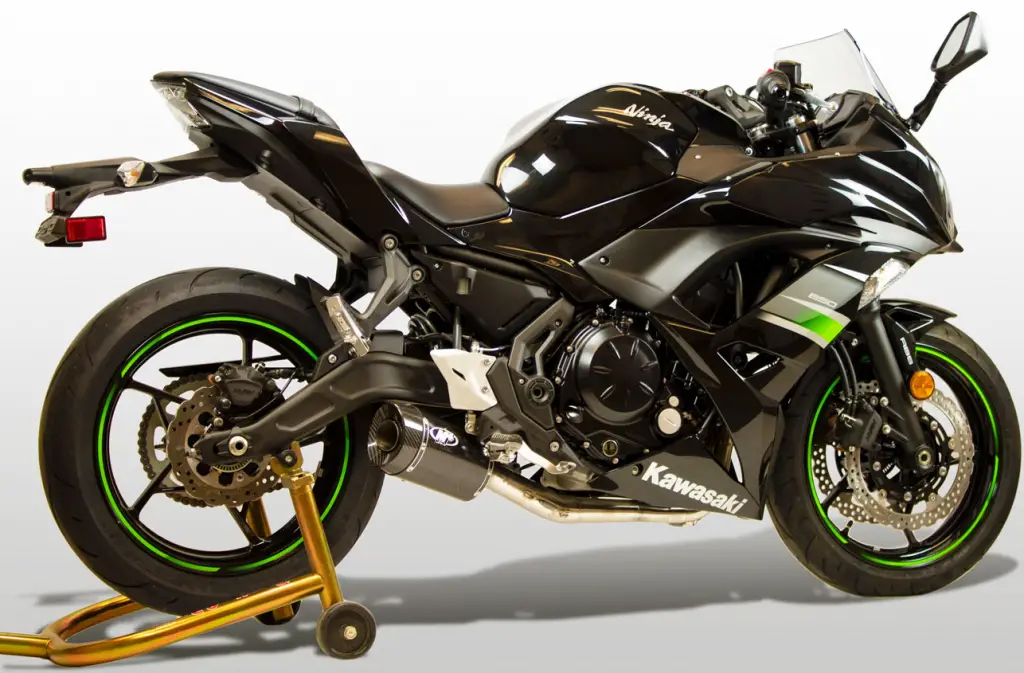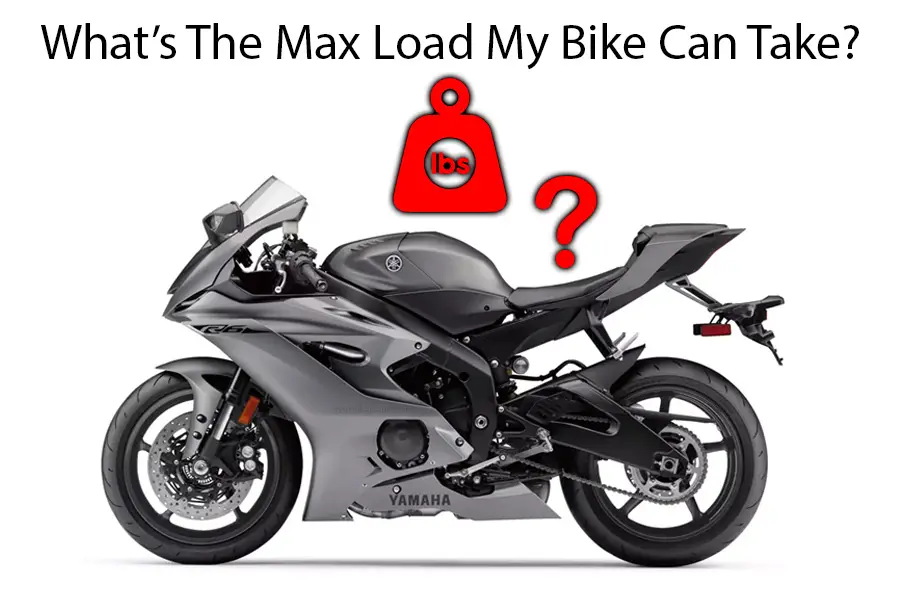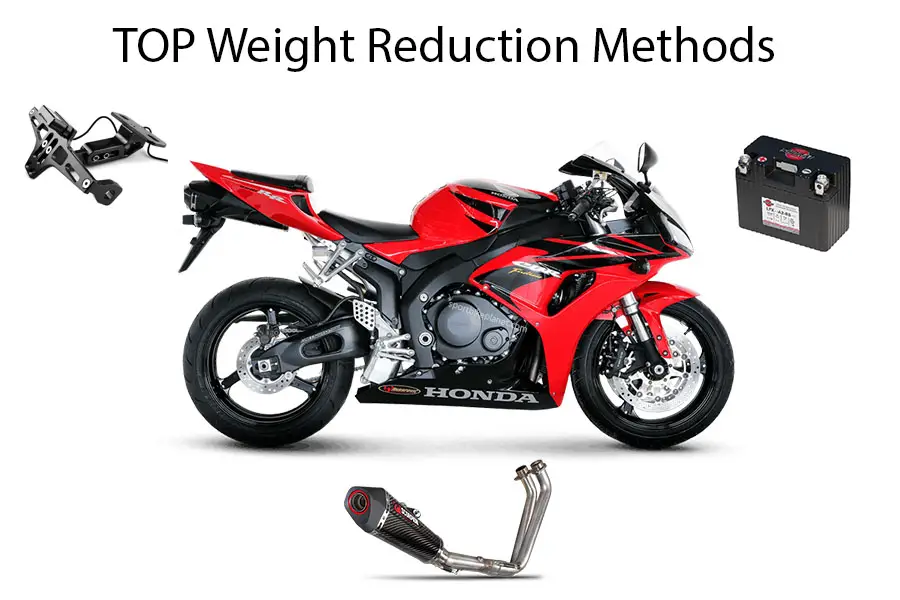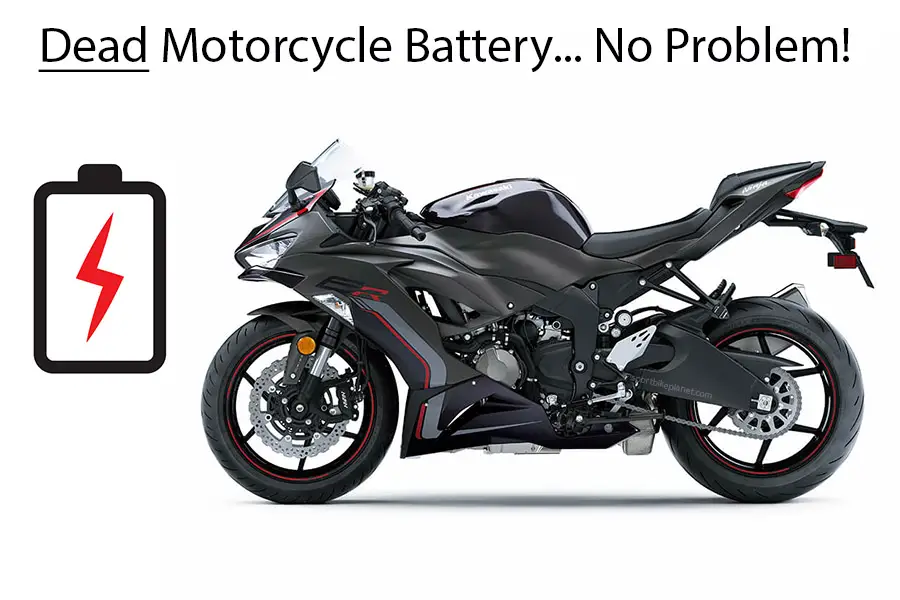I’m not gunna lie… I absolutely love the feel of brutal acceleration, and this goes one hundred percent for my motorcycle.
So in an effort to get more acceleration out of my sportsbike I set about figuring out how to most effectively reduce the weight of my bike, and here are the top methods of motorcycle weight reduction I found…
The best ways to reduce motorcycle weight are:
- Upgrade Exhaust Pipe/System
- Switch to Lithium Ion Battery
- Swap Steel Sprocket To Aluminium Version
- Get Lighter Aftermarket Rims
- Use Lighter Tires
- Install Carbon Fibre Fairings
- Remove Passenger Footpegs
- Use a Tail Tidy
- Remove Toolkit and Manual
- Lose Bodyfat
So you’ve now got a broad overview of the more common methods of lightening your motorcycle, however it’s worth diving into each specific section in a little more detail to see what’s practical for your bike and your bank balance.
In looking into weight savings for my own sportbike I found that some of them were more worth my time than others and it wasn’t always as simple as just picking the cheap things to get done.
Pound For Pound, Not All Weight Is Equal
The nature of weight becomes more tricky when your sportbike is in motion.
There is static weight, there is also sprung and unsprung weight, and then there is rotating mass…
What Is Static Weight
Static weight is essentially curb weight. It’s what the motorcycle weighs all in, and although the distribution of that weight certainly matters – sportbikes tend to have a slight front end weight bias, for instance – it also matters what amount of weight is static, sprung, or unsprung.
What Is Sprung Weight?
Sprung weight is the weight of any and all components carried by the motorcycle’s suspension. This includes the engine, transmission, fuel system, bodywork, all that. It also includes the weight of its rider and/or passenger, but we’ll gloss over that for now.
What Is Unsprung Weight?
Unsprung weight is weight located beneath the suspension. This includes the wheels, tires, brakes, wheel hubs and bearings, and also the swingarm. If the springs don’t support it, the weight is unsprung.
How Does Sprung Weight Affect A Motorcycle?
Sprung weight has both negative and positive effects on a motorcycle. High amounts of sprung weight push a machine towards the ground, which is good for traction. To a point, sprung weight does help a motorcycle feel “planted.”
But too much sprung weight lowers fuel economy and performance. Excessive sprung weight increases stopping distances, makes changing directions difficult, and reduces acceleration.
What Is Rotating Mass On A Motorcycle?
Rotating mass on a motorcycle is the gyroscopic effect of the wheels spinning and how that spinning motion impacts the overall performance and stability. It is, in fact, largely what makes riding a motorcycle possible.
Do you have a bicycle with an easily removable front wheel? If it’s not too much trouble, you can try this little experiment to demonstrate the effect of spinning weight: Remove the front wheel from your pedal bike and hold it motionless in front of you by either side of the axle. Rock it from horizontal to horizontal, from 9 o’clock to 3 o’clock, and back.
Easy, right? Now, have a friend give the wheel a brisk spin while you hold it. Rock it back and forth again and you’ll better understand the effects of rotating mass versus static weight.
Now that you’re familiar with some of the ways weight impacts your sportbike lets take a look at the specifics of what we can remove or replace on your bike to get the best and most effective weights savings and at what general cost…
Upgraded Exhaust System To Lighten Your Motorcycle
An upgraded motorcycle exhaust system can lighten your bike considerably with weight savings of 10lbs+ (5kg) in some cases for full system upgrades.
A full exhaust system upgrade replaces everything from the factory head pipes leading out from the engine all the way through to the muffler.
While giving decent horsepower and torque improvements they can also be quite impressive in reducing the weight of your bike as well given the lightweight components and compounds they’re made from.
Impressive weight reductions can be achieved for example with the M4 unit in excess of 10lbs lighter than the stock exhaust system.

There’s also quite some discrepancy in the cost per pound of weight reduction, however, this also has to be offset by the real-world power improvement you’ll gain through installing the new system.
You’ll find aftermarket exhaust systems use either aluminium, titanium, or carbon fibre muffler canisters.
Although the greatest weight savings are to be had with carbon fibre, this is a deeper dive into the wallet in both the short and longterm.
Carbon fibre units tend to be more expensive at initial purchase, and are far more susceptible to eventual cracking and even breaking from vibration.
While carbon dissipates heat better than the other materials, it is also the one of the three materials that can eventually succumb to long term high speed operation.
Also, should you inadvertently put your bike on the ground, carbon fibre mufflers seldom survive the impact.
One final note on CF muffler units: A muffler should be periodically serviced with new packing material.
This is relatively simple, and with most aftermarket units you simply drill out the rivets holding the end cap on, then replace with new rivets after wrapping the silencer core with packing.
Carbon chambers are particularly prone to cracking around the rivet area.
At the other end of the spectrum, aluminium canisters will be the cheapest to purchase and should last indefinitely sans any crash damage. They are also the heavier design by a minor degree.
The sweet spot for many will be titanium systems.
Titanium cans come very close to carbon fibre in heat dissipation, weigh only a tick more, and are far stronger and more durable.
Switch To A Lighter Lithium Ion Battery
A lithium battery can give you up to 80 percent weight savings for your motorcycle, which can translate into approximately five pounds of weight savings. In terms of weight saving measures on sportbikes this option stacks up relatively well when compared to other measures.
Lithium ion batteries can weigh in at a very surprising two pounds or less, which still amazes me given the clunky and heavy lead-acid batteries we’ve been used to for so long.
The factory delivered battery in my Ninja 650 is 6.72 pounds, however, for example, a Shorai lithium ion battery for the same bike comes in at less than a third of this weight at a shade over two pounds.
And at the going price for this battery it’s better bang for your buck than swapping out the exhaust for weight savings.
Get An Aluminium Sprocket To Lighten Your Motorbike
Upgrading to an aluminium sprocket and chain combo can lighten your motorcycle by up to three pounds, however you likely won’t feel a massive difference to the handling of your motorcycle with this small amount of weight reduction.
While the weight of rotating parts such as a sprocket can have a bearing on motorcycle performance it’s unlikely that you’ll notice any significant difference unless you’re on a race track pushing the bike to its limits.
Note also that an aluminium sprocket will not have the longevity of the heavier steel unit, and will be more susceptible to damage from an improperly maintained or tightened chain.
Having said this, a lighter front and/or rear sprocket and chain combination can alter how quickly your engine revs out and when you change gear, allowing for some improvement in acceleration.
Additionally, different sprocket and chain colour combinations can be utilised making for a nice custom look to your sportbike.
Lighter Aftermarket Wheels
Substantial performance and handling gains can be achieved through the installation of lightweight aftermarket wheels, but two major hurdles are availability and cost.
Remember, wheels represent rotating mass. The faster the wheel spins, the more heavy the wheel will seem. Lessen the rotating mass with lighter wheels and the motorcycle will accelerate, decelerate, and tip into a corner with less effort and more speed.
Another important aspect is that wheels are unsprung weight. Again, everything that sits on top of the suspension is sprung weight.
But your wheels, brakes, fork lowers, swingarm, and an arguable percentage of your rear shock is unsprung. The weight of these components is controlled by your suspension.
When a heavier wheel hits the same bump as a lighter wheel, the suspension has to work harder to return the weight of the wheel – which is still spinning, thus effectively even more weight – to the ground.
But all this is largely theoretical, as very few aftermarket wheels are readily available for most sportbikes. Alas.
There are a handful of manufacturers that largely cater to the racing community, but their products are generally oriented towards only specific machines raced by the manufacturers – and they are very pricey.
Dymag, for example, operating out of the United Kingdom, supplies wheels to racers on the grids ranging from the Isle of Man to MotoGP to MotoAmerica.
If they do have the proper fitment for your bike, be prepared to pay £1895, or about $2400 in U.S. dollars for a pair.
Upgrade Tires To Reduce Motorcycle Weight
Tires developed specifically for a lightweight high performance sportbike are generally lighter and manufactured from softer rubber compounds than say, a sport-tourer type of tire that is aimed at higher mileage life. Tires vary tremendously in compounds, construction, and design – and also in intent.
Tires of course have to be replaced from time to time, and this can provide the opportunity to find a still lighter and more performance oriented tire for your machine.
The latest Ninja 650, for instance, is delivered from Kawasaki as new with 160/60-17 Dunlop Sportmax Roadsport 2 rubber on the rear paired with a 120/70-17 on the front. The Sportmax Roadsport 2 is a recent replacement for Dunlop’s Sportmax D214 tire.
The Roadsport 2 is positioned between Dunlop’s more budget friendly Sportmax GPR-300 and its top performance focused tire, the Sportmax Q3+.
Now, most tire manufacturers, including Dunlop, are remarkably reticent in providing weights for their tires. But you can be sure that the Q3+ is significantly lighter than the RoadSport 2.
Unfortunately, you’ll pay heavy for that. The higher priced tire will certainly provide greater performance and better handling with more traction and a lighter carcass. But do be aware that top line tires from all the manufacturers will wear more quickly than cheaper rim-savers and require more frequent replacement.
Of course, you are by no means required to replace Dunlops with Dunlops. Pirelli tires are often reputed to be some of the lightest tires available, and you could always switch up to a pair of Diablo Rosso rubbers.
Installing Lightweight Bodywork
Significant weight savings can also come from replacing your stock ABS plastic body work with lighter race oriented aftermarket parts constructed from carbon fibre and other composites.
Companies such as Lightech, Sharkskinz, SE Composites, Lacmoto, and others offer lightweight alternatives to OEM bodywork, and supply many in the paddock at MotoGP, World Superbike, and MotoAmerica races.
Distributors like sportbikeunlimited.com and motovationusa.com retail a wide range of product from these manufacturers.
Surprisingly, the costs are often not appreciably higher than stock replacement bodywork. However, they will largely be unpainted and unadorned by any graphics – so you’ll also be shouldering the cost of making your bike pretty again.
Although, bare carbon fibre is pretty attractive to some of us.
Be aware, though, that this bodywork is generally designed for racing purposes.
An upper fairing will likely not have a hole for your headlight! And various inner panels and such used by the OEMs to make areas like the dash panel area more attractive on your street bike are considered superfluous for racers.
Remove Passenger Footpegs And Seat To Lighten Your Bike
Removing the passenger footpegs from your motorcycle can lighten your bike by a moderate amount, and removing the seat and putting a cowling over the empty space may bring a small additional amount of weight savings as well, depending on the cowling you use.
Use A Smaller And Lighter Tail Tidy
A more compact number plate frame, or tail tidy, will save you some weight but it will likely be rather minimal given the factory frames are usually relatively light to start with.
Remove Toolkit And Manual To Lighten Your Motorcycle
Removing the toolkit and manual will save you weight, although it may not be significant. For example, the toolkit and manual on my sportsbike weigh only a little, and this amount of weight reduction will not yield too much performance.
This also poses a small safety concern given you may need your toolkit and manual if you break down, but these days you can get motorcycle manuals on your phone easily enough and if you really need tools for a roadside breakdown it’s unlikely you’ll have sufficient tools stored on your bike anyway.
Ultimately this comes down to personal preference and how prepared you want to be.
Lose Bodyfat To Lighten Motorcycle Load
Losing bodyfat is easily the most effective method of lightening your motorcycle load, provided you have the bodyfat to lose. Some riders have sufficient bodyfat that they can lose which adds up to multiples of all the above methods combined and this will reflect strongly on the performance of your bike.
Other More Obscure Methods To Lighten Your Motorcycle
As noted above, there are a number of ways to lighten your sportbike. And some make more sense than others, both in terms of cost and actual utility.
As with anything even tangentially racing related, the old axiom applies: How fast you go depends on how much you are willing to spend.
But at some point, for most of us on the street, you reach a point of diminishing returns.
An example of this: you can drop a few pounds, maybe as much as three, with a titanium bolt kit that might cost upwards of two or even three thousand dollars.
Specialty companies make lightweight wiring harnesses that shed a few pounds for serious race teams, and the price of one of those wiring looms alone would actually buy a pretty nice mid-sized sportbike complete!
RELATED: Motorcycle Weight Limits, Calculating Max Rider Weight




